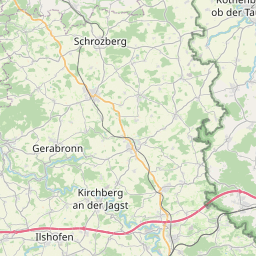Description: Das Projekt "StaPlaRes - N-Stabilisierung und wurzelnahe Platzierung als innovative Technologien zur Optimierung der Ressourceneffizienz bei der Harnstoff-Düngung, Teilprojekt 8" wird/wurde gefördert durch: Bundesministerium für Ernährung und Landwirtschaft. Es wird/wurde ausgeführt durch: Sächsisches Landesamt für Umwelt, Landwirtschaft und Geologie.StaPlaRes entwickelt neuartige Technologien im Rahmen der Harnstoff-Düngung mit dem Ziel größtmöglicher Ressourceneffizienz und Umweltschonung. Geprüft werden zwei innovative Verfahren: (1) Stabilisierung: Die kombinierten N-Stabilisierung mit Urease- und Nitrifikationshemmern soll eine signifikante Minderung von N-Verlusten bewirken. (2) Injektion: Durch ein spezielles Side-Dressing, bei dem Harnstoff auch in stehenden Beständen platziert werden kann, sollen NH3-Verluste gemindert werden. Begleitend erfolgen Versuche zum verlustmindernden und ertragssteigenden Potenzial der innovativen Technologien im Gewächshaus. Zentrales Ziel aller Maßnahmen ist die signifikante Erhöhung der N-Effizienz und eine deutliche Senkung der Dünger-N-Verluste. Die Bewertung der Verfahren erfolgt über mittels Ökobilanzen / Ökoeffizienzanalysen. Es wurden sechs Arbeitspakete (AP) definiert. Das zentrale Versuchsmodul ist ein dreigliedriger Fruchtfolgeversuch (AP 1). Außerdem werden gasförmige N-Verluste in Form von NH3 (AP 2) und N2O (AP 3) gemessen. In begleitenden Gewächshaus-, Labor- und Lysimeterversuchen werden Effekte der Stabilisierung und Injektion auf N-Umsatzprozesse untersucht (AP 4). Eine weiterführende Bewertung erfolgt durch Ökobilanzen / Ökoeffizienzanalysen (AP 5). Der Verbund beinhaltet den zeitnahen Transfer der Erkenntnisse in die landwirtschaftliche Praxis (AP 6).
In Teilprojekt 8 werden AP 4 und AP 6 bearbeitet. Schwerpunkte sind Lysimeterversuche, die Einbeziehung von Ergebnissen in ein neues Düngebedarfs- und Bilanzierungsmodell sowie der Wissenstransfer.
Types:
SupportProgram
Origins:
/Land/Sachsen/LfULG
/Bund/UBA/UFORDAT
Tags:
Harnstoff
?
Ammoniak
?
Bodenstickstoff
?
Nitrifikationshemmer
?
Düngemittel
?
Gewächshaus
?
Stickstoffemission
?
Bodenwasser
?
Lachgas
?
Ernteertrag
?
Lysimetrie
?
Pflanzenproduktion
?
Rhizosphäre
?
Stickstoffbilanz
?
Stickstoffdüngung
?
Pflanzenwurzel
?
Ökobilanz
?
Stickstoffeffizienz
?
Vergleichende Bewertung
?
Bewertungsverfahren
?
Emissionsminderung
?
Fruchtfolge
?
Hemmstoff
?
Innovation
?
Wissenstransfer
?
Umwelttechnik
?
Laborversuch
?
Modellierung
?
Ökoeffizienz
?
Nachhaltige Landwirtschaft
?
Umweltentlastung
?
Effizienzsteigerung
?
Landwirtschaft
?
Agrartechnik
?
Ressourceneffizienz
?
Umweltverträglichkeit
?
Bewirtschaftungssystem
?
Stoffwechsel
?
Nachhaltige Bewirtschaftung
?
Ertragssteigerung
?
Enzymaktivität
?
Side-Dressing
?
Maßstabsvergrößerung
?
Region:
Sachsen
Bounding boxes:
10.40664° .. 10.40664° x 49.29433° .. 49.29433°
License: cc-by-nc-nd/4.0
Language: Deutsch
Organisations
Time ranges:
2016-07-25 - 2019-07-24
Alternatives
-
Language: Englisch/English
Title: Collaborative project: Nitrogen Stabilization and Subsurface Placement as Innovative Technologies Enhancing the Resource Efficiency of Fertilized Urea - subproject 8 (StaPlaRes)
Description: The R&D project STAPLARES investigates and evaluates innovative systems of urea fertilization with the intention to figure out most sustainable strategies for German sites. The project deals with two frequently mentioned options for NH3 mitigation following urea fertilization: (1) Stabilization: A combined use of urease and nitrification inhibitors is seen to reduce N losses significantly avoiding pollution swapping and providing further agronomic benefit. (2) Subsurface placement: A special side dressing technology injecting granular urea in combination with a mechanic weed control is seen to reduce NH3 emissions and, in addition, to improve soil properties and crop development. These effects will be examined in a three-year crop rotation under practice related conditions. Accompanying tests in laboratories, green houses and on field sites complete the crop rotation trials to validate the findings and to clarify crucial N converting processes. Key objectives are the increase of NUE and the reduction of N loss. Calculations of field-related N balances as well as product-related life cycle assessments are intended to ensure a proper scientific validation of the compared urea fertilization technologies. A timely implementation of results in the agricultural practices is planned. Thus the R&D project will make a significant contribution to develop optimum strategies for a resource efficient and environmentally sound urea fertilization. The R&D project STAPLARES will provide a systematic approach to evaluate two innovative technologies of urea fertilization: (1) the combined use of urease and nitrification inhibitors; (2) injection of urea. These technologies will be compared with the common standard (broadcast application). The analysis includes determinations of N losses and yield parameters, calculations of N uptake and N use efficiency and the valuation of technology based on N balance and Life Cycle assessment. Six working packages (WP) were defined to organize the project work corresponding to scientific and logistic aspects: Key element of the experimental design is an agronomic crop rotation (WP 1) with integrated NH3 and N2O measurements (WP 2 and WP 3) performing the different urea fertilization technologies. Corresponding greenhouse, lab and lysimeter tests will show impacts of N stabilization and injection on yield, N uptake, NH3 loss and NO3- leaching under defined conditions. In addition, data sets of field, greenhouse and lab tests will be used in modeling approaches describing N loss processes (WP 4). Calculations of NUE, emission factors (NH3, N2O) and three-year N balances as well as life cycle assessments (WP 5) will be based on the findings in WP 1 to 4. Finally, STAPLARES provides educational and consulting instruments to promote the transfer and implementation of outcomes from WP 1 to 5 in the agricultural practice (WP 6) (abridged text)
https://ufordat.uba.de/UFORDAT/pages/PublicRedirect.aspx?TYP=PR&DSNR=1066728
Resources
Status
Quality score
- Overall: 0.46
-
Findability: 0.52
- Title: 0.00
- Description: 0.20
- Identifier: false
- Keywords: 0.91
- Spatial: RegionIdentified (1.00)
- Temporal: true
-
Accessibility: 0.67
- Landing page: Specific (1.00)
- Direct access: false
- Publicly accessible: true
-
Interoperability: 0.00
- Open file format: false
- Media type: false
- Machine-readable metadata: false
- Machine-readable data: false
-
Reusability: 0.67
- License: ClearlySpecifiedAndFree (1.00)
- Contact info: false
- Publisher info: true
Accessed 1 times.






